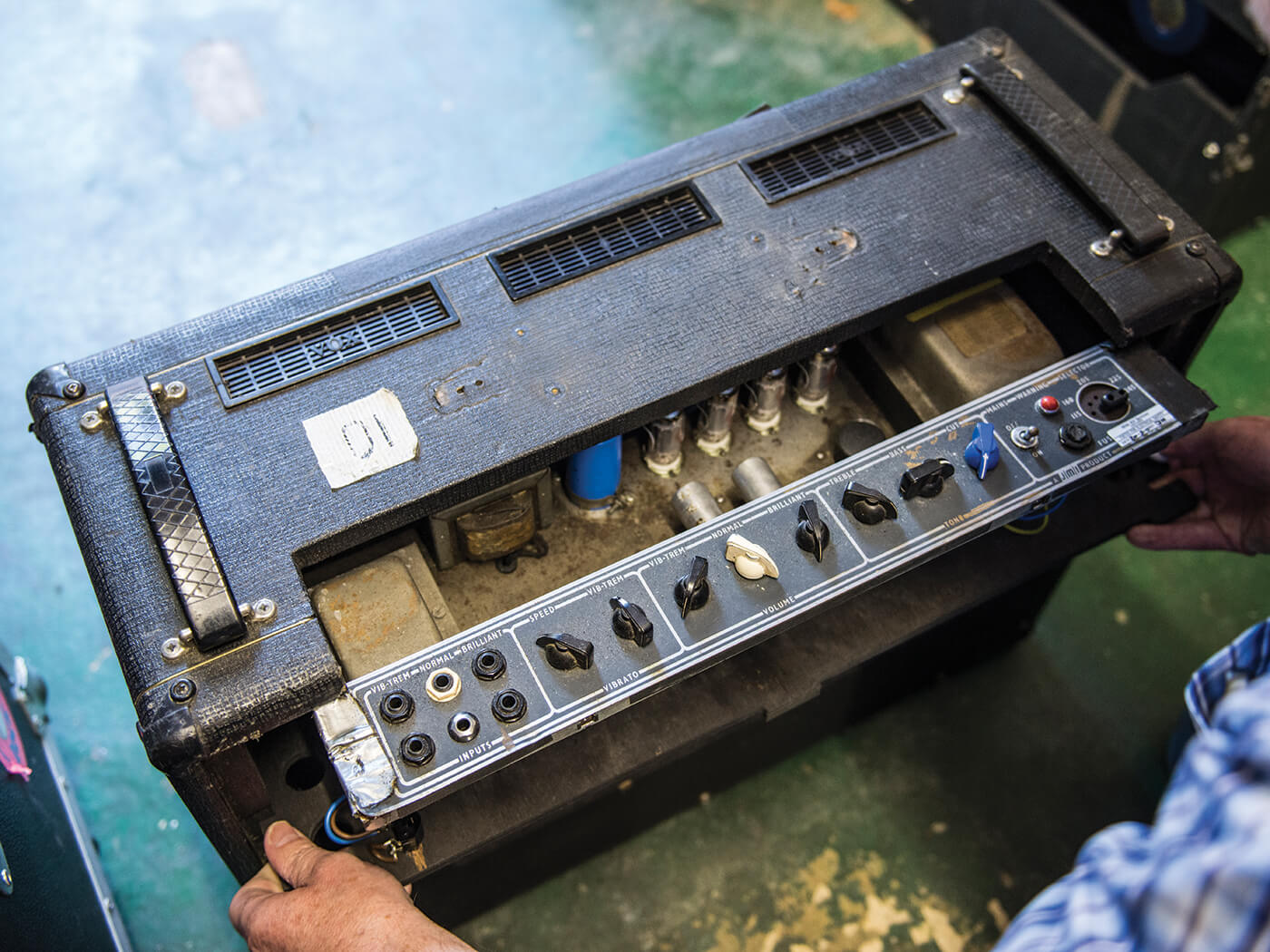Related Tags
Amp FAQ: What are tube amplifier classes?
A working class hero is something to be, but a working knowledge of amplifier classes is not be sniffed at either. Rift head honcho Chris Fantana gets technical.

Here’s one of Brian’s many AC30s being given an overhaul by his amp tech, the late Mike Hill. All images: Eleanor Jane
Hi Chris, I’m looking at buying a new amplifier and the sales spiel says it’s ‘Class A’. What does this mean?
– Scott, Barnsley
Chris Fantana: Hi Scott, great question! There’s definitely a lot of confusion around amplifier classes and what they mean to the end user.
The output stage of an amplifier can operate in many different ways, using various different methods. We use the Class system to give a broad indication of an amplifier’s characteristics and performance. These classes, of which there are nine in total, are related to the time period that the amplifier is passing current. This is expressed as fraction of the signal waveform applied to the input. Some of the classes contain sub-classes, usually indicated by a suffix.
The nine main classes are: A, AB, B, C, D, E, F, G, and H. Valve-amp-loving guitar players really only need concern ourselves with just three of these classes: A, AB, and B.
Class A
The output valves in this class are conducting 100 per cent of the time. As a sine wave can be thought of as a side-on view of a coiled spring – look at a vibrating guitar string on your guitar to see what I mean – we say that the conduction angle is 360 degrees.
As these valves are working 100 per cent of the time they don’t get a rest, so they’re actually quite inefficient. They have a maximum theoretical efficiency of just 25 per cent, which is why Class A amplifiers don’t produce very much power. The upside to this design is that circuits can be relatively simple to build and maintain, while producing better mid-to-high-frequency performance.
If we use a pair of EL34s as an example, in Class A you’ll be able to produce around 20-watts of RMS power.
Class B
You probably won’t come across a Class B guitar amplifier but we need to understand what they are anyway. In this class, each output valve only conducts exactly one half of the input signal, so the conduction angle is 180 degrees. One valve will conduct the positive half, and the other conducts the negative.
As we now have a 180 degrees rest period for each valve in-between conduction events, we can use that to cool the valve down and therefore push it harder when it is conducting. A Class B amplifier can be much more efficient that a Class A, with a maximum efficiency of over 75 per cent. You can make big power when operating in Class B, but like every other class it has drawbacks. For guitar use, a Class B amplifier won’t sound very musical with an odd balance of both even and odd-order harmonics when overdriven.
In Class B, our pair of EL34s will be able to produce nearly 80-watts with relative ease.

Class AB
So what is Class AB? It’s as the name suggests – a mix of both. In Class AB, the conduction angle is greater than 180 degress but less than 360 degrees. It it up to the circuit designer to choose where that point is. Usually in a guitar amplifier, the signal will stay in the Class A region where it is amplified with good fidelity and will move closer to Class AB when pushed harder. A classic example of this is the Vox AC30, which is Class A when clean but quickly moves into AB when pushed even slightly.
Nearly every guitar amplifier with multiple output valves will operate in Class AB. Class AB is more efficient that Class A, but less so than Class B. Our EL34s have a slightly easier time in Class AB than B, with typical outputs ranging from 35-50 watts.
So, does an amplifier’s class affect tone? Because that’s what we all want to know, right? Well, yes and no.
Whilst there are tonal differences between the classes, they are easiest to spot in a hifi application, whereas in our low-fidelity guitar amplifiers, it’s less so. You see, even the cleanest guitar signal is easily way more distorted than you’d ever find in a hifi. For reference, a hifi is considered to be ‘clean’ up to around 0.5 per cent distortion, although modern units will never stray above 0.1 per cent. Our guitar amplifiers on the other hand rarely drop below 1 per cent and some manufacturers will consider 10 per cent as clean operation. If you want to know what your clean guitar signal really sounds like, plug into a modern bass amplifier – you’ll immediately notice the missing harmonics and overtones generated by your guitar amp.
There are other features in a guitar amplifier that affect tone far more than its class ever could, such as the tonestack or method of biasing the output valves, so as far as the player is concerned, it could be considered insignificant. From a designer’s point of view, it’s the foundation on which your entire circuit is built.
Using the class system to market and sell your amplifiers? Well, it’s just that… marketing.
Visit riftamps.com for more on Rift’s range of Brit-built boutique amps.
